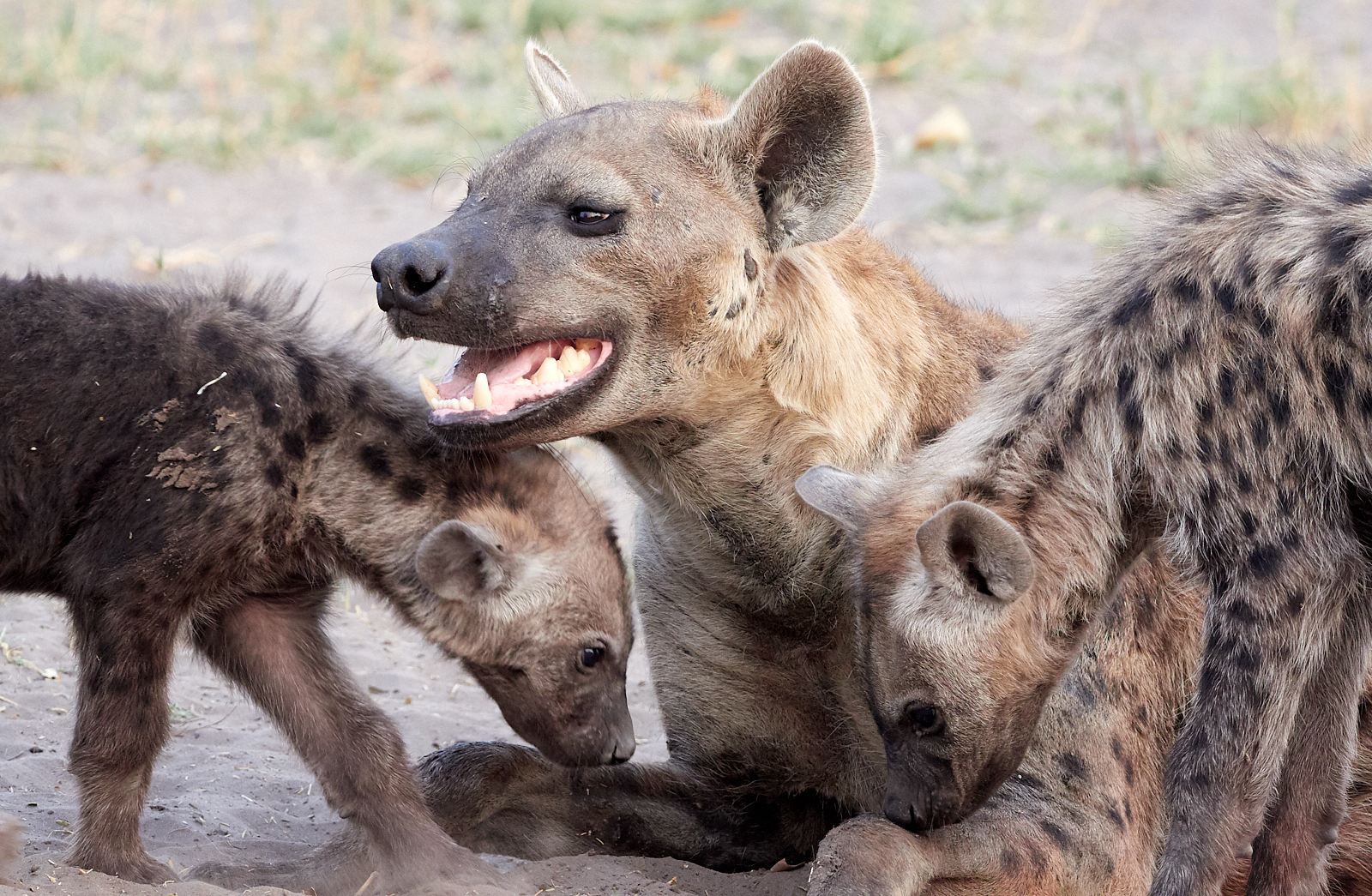The Hyena, whether spotted (Crocuta crocuta), brown or its relative the Ardwolf, has had a bad press over the years.
Spotted hyena in Savute wildlife reserve
Scavenging is never an easy sell as a way of existence, and we have been conditioned by our sport-hunting Victorian ancestors to laud the killers of the bush over those who make a living on the killers’ left-overs.
Disney’s Lion King cast them as villains, and matters didn’t improve when the Lord of the Rings films incorporated a lot of hyena in the design of the evil-looking ‘Wargs’ ridden in battle by senior Orcs, especially their muscular forequarters and short back legs. Not surprisingly, hyenas are widely despised in the popular imagination today.
In fact they fulfil a vital function, the spotted hyena having the most powerful bite of any carnivore mammal in the bush, which enables them to tear open carcasses killed by feline predators, allowing other creatures such as lion, jackal and vulture more rapid access to the meat.
Spotted hyena on elephant killed 4 days before by lions of the Northern Pride, Savute
They scavenge both alone and in packs, and they do predate on occasion and also drive solitary predators such as leopard off kills. It is primarily to escape hyena attack that leopard have evolved the physical ability and skills to haul heavy prey in to trees - see my earlier post ‘Patience Rewarded’ which illustrates such an encounter.
In fact, hyena are genetically more closely related to the cats than they are to their visual relatives the canines, although they are in fact closest to the mongoose family. Their social structure is interesting since they have a matriarchal society in which all the females in a clan out-rank all the males, while their young (pups) are playful and attractive.
We had several fine encounters with hyena in Botswana, both individually in the bush and as clans around their dens, and I built up a respect for their power, tenacity and patience. I hope these images do something to rehabilitate this interesting animal in people’s minds.
Click on the first thumbnail to open in a lightbox, where you can swipe or click to scroll right.













